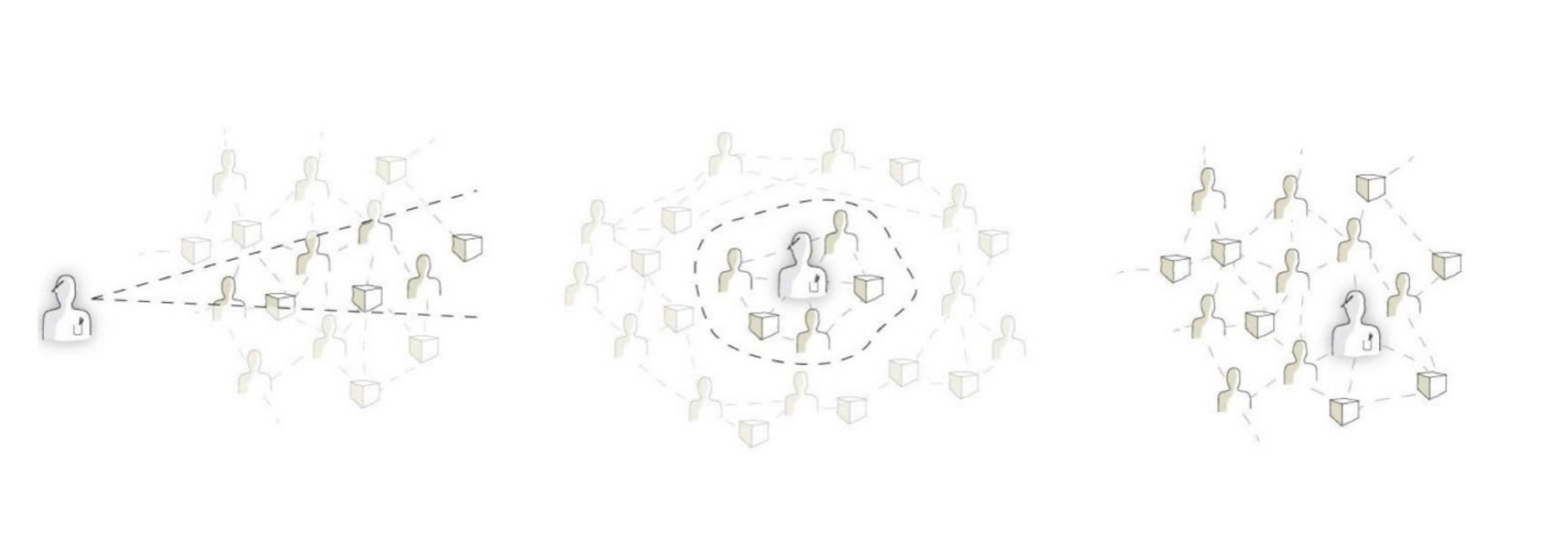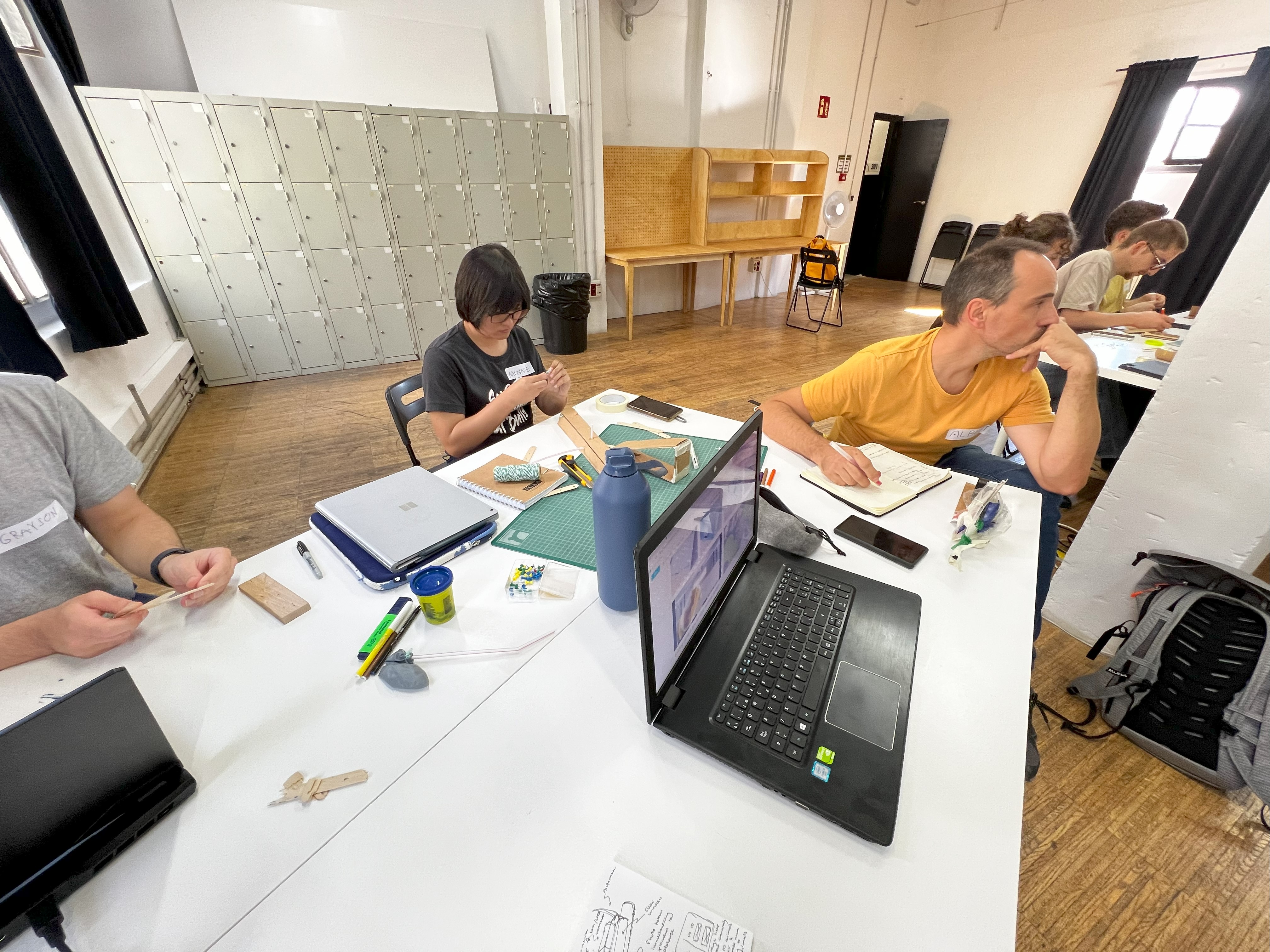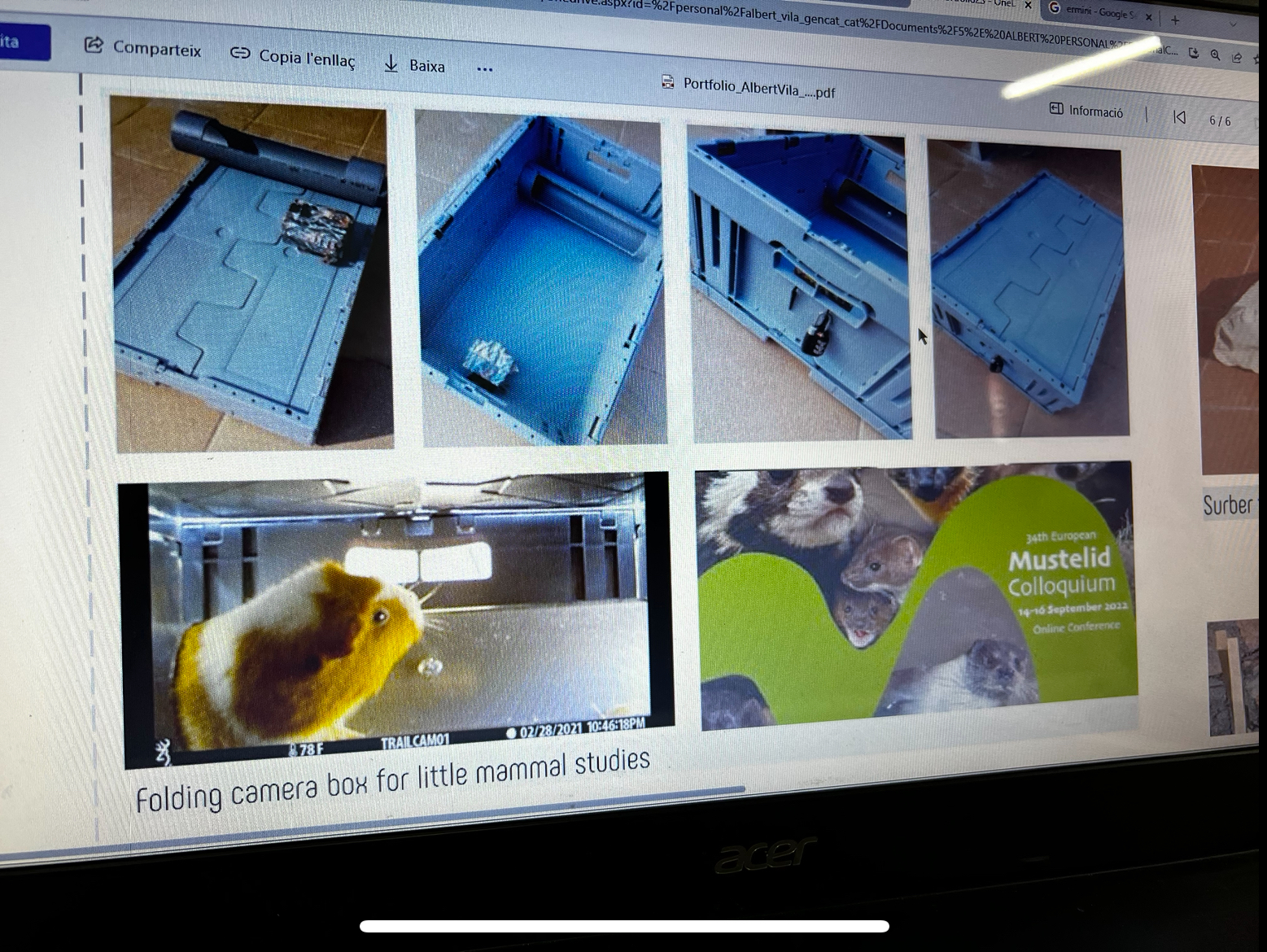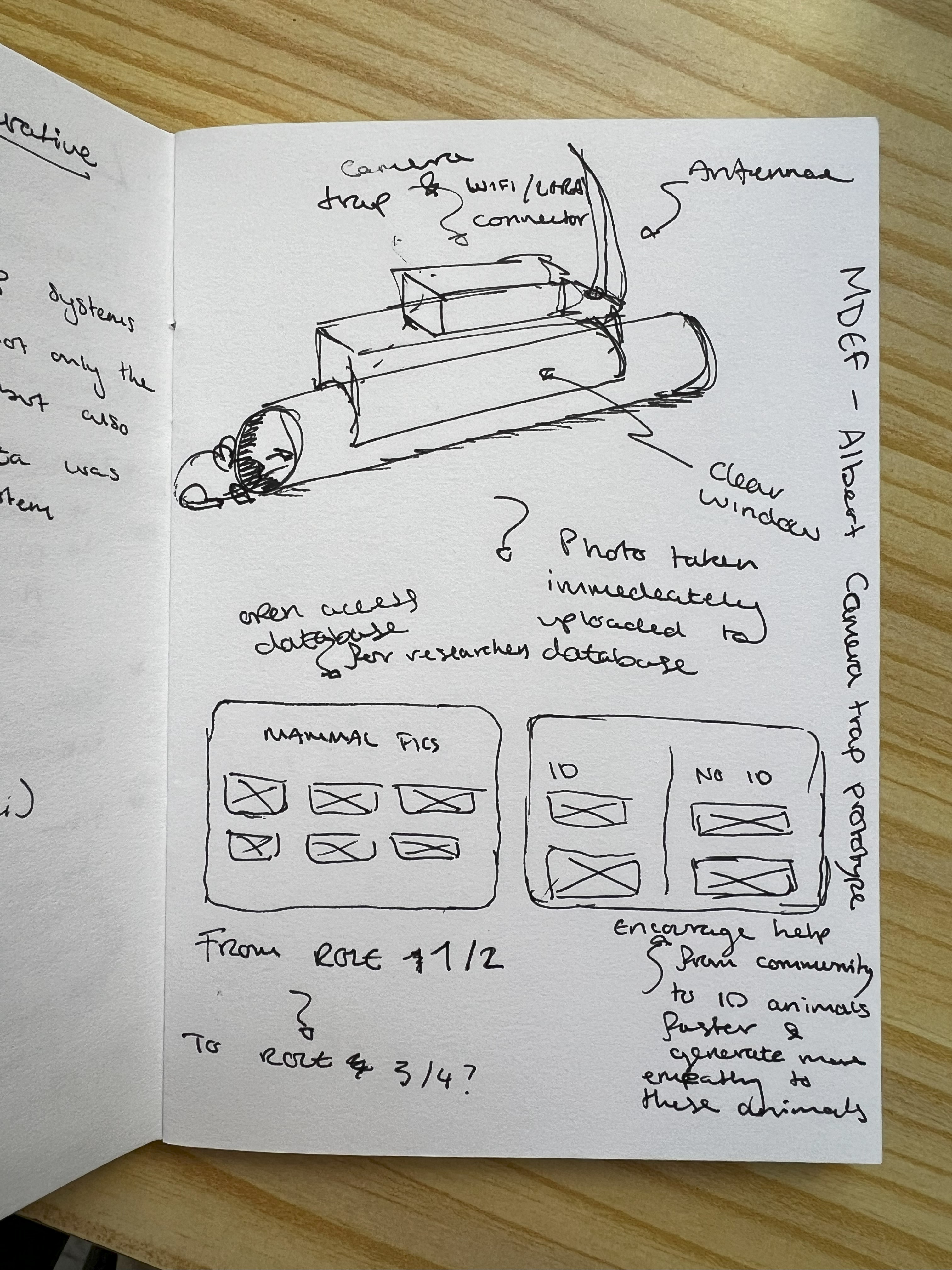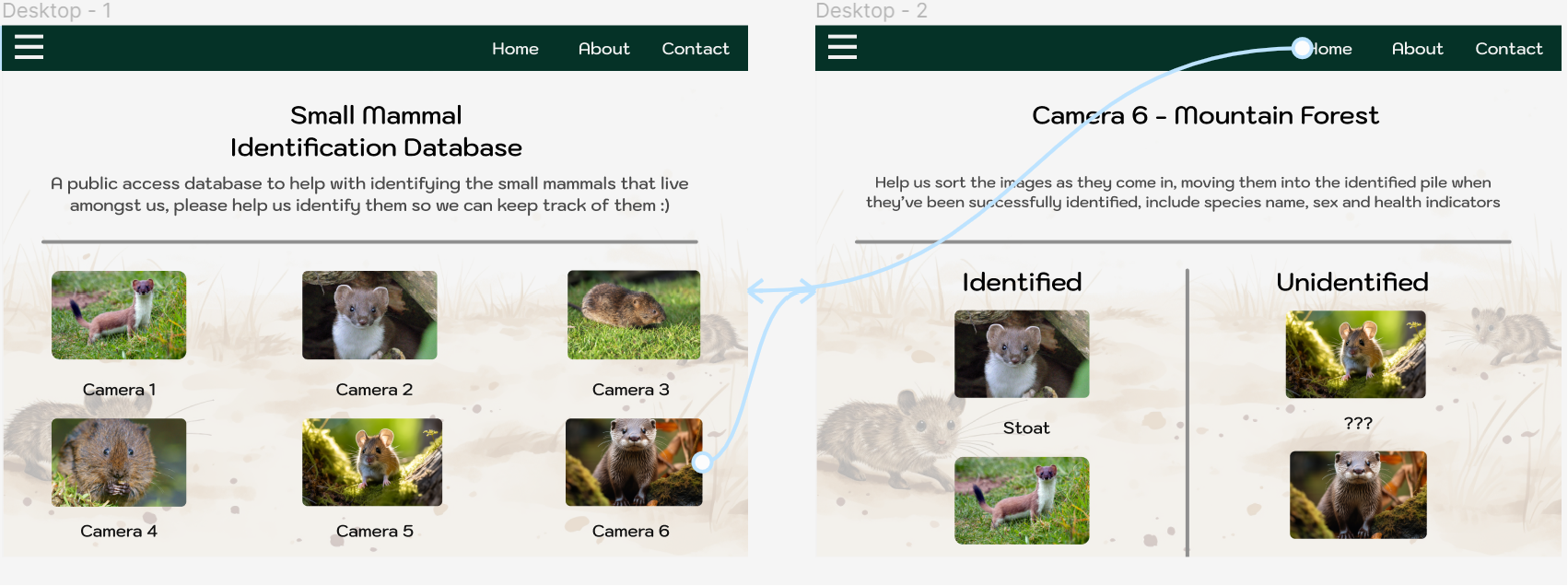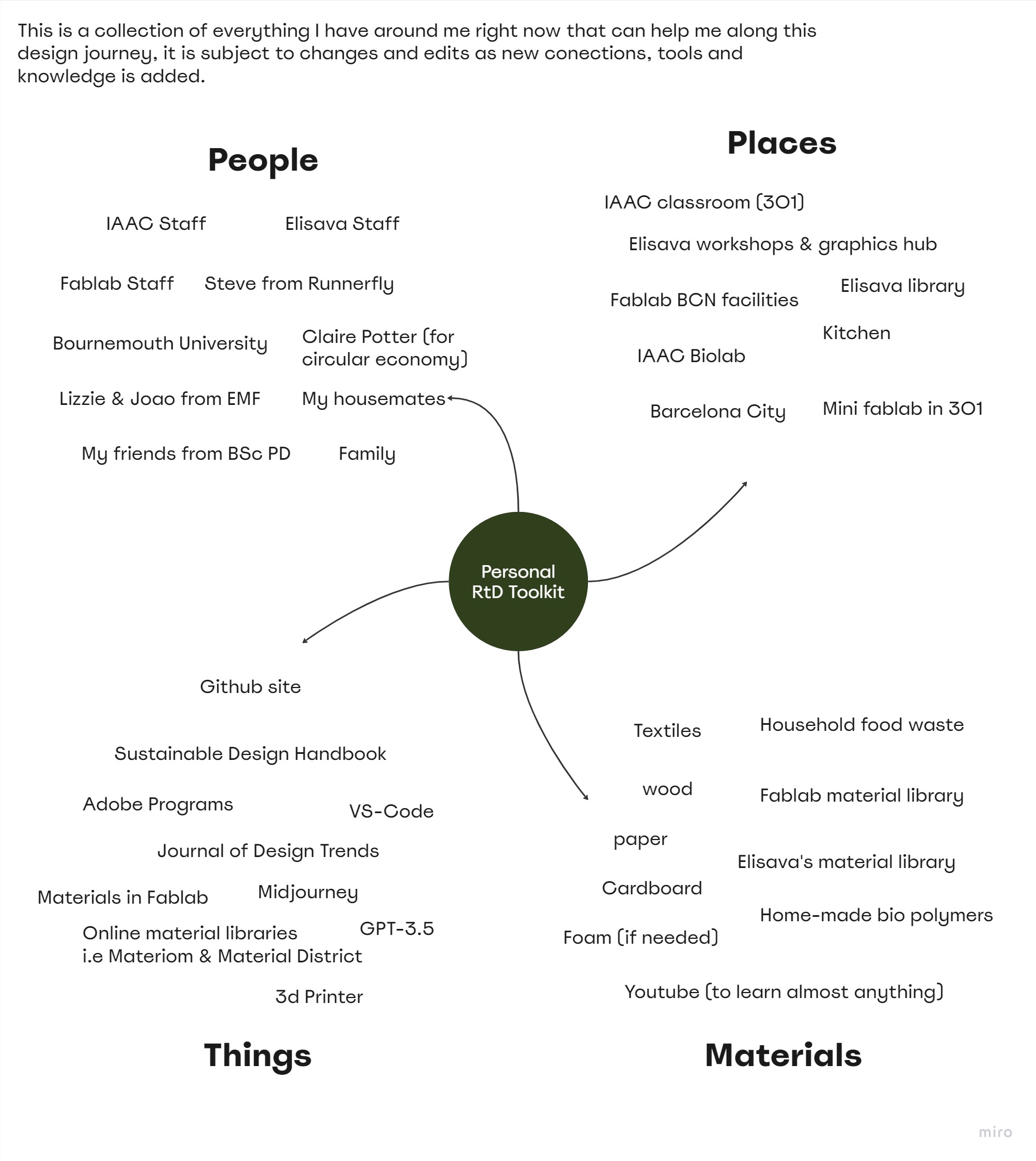Roles of Prototyping in First Person Person Perspective (1PP) Research through Design¶
Too Long Didn’t Read
This article explores First Person Perspective (1PP) in design, which emphasizes active engagement in research and development, critical assessment of problem-solving efforts, and involvement of stakeholders and the environment. It introduces different roles of prototyping, including prototypes as experimental components, means of inquiry, research archetypes, and processes for design research. We took part in activities involving group discussions and reframing past projects through various prototyping roles, leading to a deeper understanding of the design process and encouraging innovative thinking. It also emphasizes the importance of a personal toolkit for design, highlighting the continuous evolution of tools, methods, and resources in the creative process.
What does First Person Perspective mean when it comes to design?¶
First Person Perspective in design encourages designers to actively engage in the research and development process by immersing themselves in the problem area. It challenges designers to critically assess their work and constantly question if the problems they are solving are actually helping the target community or individual. By being deeply involved and understanding the root cause of the issue, designers ensure that they address the underlying problems rather than just surface-level manifestations.
This approach also emphasizes the importance of involving stakeholders throughout the entire design project, ensuring that the final product is actually used by its intended audience. It encourages designers to consider not only human users but also non-human agency, such as plants and animals, and the impact of their designs on the wider ecosystem.
Furthermore, First Person Perspective recognizes that products have a lifecycle and will eventually “die.” Designers are encouraged to consider the impact of the product’s end-of-life, including how, when, and where it will cease to exist and what happens to it afterwards. This holistic perspective takes into account the larger context and the potential consequences of design decisions.
It’s often easy for us as designers to fall into the external “problem solver” trap, and see the world as a series of problems to be tackled on a list, in reality, there is only so far we can go on our own. First Person Perspective emphasizes the importance of gathering information and developing solutions in a way that is not extractive but rather involves stakeholders, the environment, and the community. By incorporating diverse perspectives and co-creating with others, we can forge new pathways and connections that allow us to create more meaningful and impactful solutions.
For me, much of this was already familiar from what I had learned while studying my product design undergrad, but I’d never seen it so broken down into an actual methodology, and it was great seeing it used from nearly day one as a way to make sure that we as designers are able to truly empathise with those we are designing for.
Roles of Prototyping¶
We were also introduced to the concept of roles within prototyping, something I was already familiar with having spent many hours using prototyping as a form of experimentation and play to figure out just exactly what might be the right direction to go in, creating rough models from cardstock and cardboard to alpha test usability, user interaction, sizing and place finding that can then lead you in the right direction. building prototypes and test rigs to gather information that would help either prove or disprove whether or not my idea would actually work or if people wanted to use my project . Though I always knew this as just “prototyping”, it was great to learn a new way of seeing and understanding how prototyping can be used to test out new ideas.
Prototypes are experiments designed to test specific hypotheses that are physically embedded in the artefact.
Examples include:
- usability tests of the prototypes
- experiential trials to assess the design attributes such as aesthetics
- cases where the prototype is treated as a physical hypothesis.
Role 1: The prototype as an experimental component¶
Prototypes are experiments designed to test specific hypotheses that are physically embedded in the artefact.
Examples are: usability tests of the prototypes, experiential trials to assess the design attributes such as aesthetics, or cases where the prototype is treated as a physical hypothesis.
Role 2: The prototype as a means of inquiry¶
Prototypes have been developed and deployed as instruments of inquiry, in much the way that scientists use specifically designed instruments to collect, record and measure phenomena
- used in the past as a method to encourage reflection on how designers need to be part of the entire lifecycle of the product, and not just ship it off to market and wash their hands of it.
- can be any form of inquiry, from a survey to a cardboard model etc
- prototyping can be done when one still doesn’t know what they want to create, as it is a means to finding out knowledge and understanding about the field of research.
Role 3: The prototype as a research archetype¶
Research archetypes are physical embodiments of concepts, understandings or design spaces.These prototypes are principally exemplary and illustrative, even (and especially) when they are exposing confrontational or contradictory scenarios.
Role 4: The process of prototyping as a vehicle for inquiry¶
The process of making a prototype is instrumental in doing design research. In this role, the process becomes a means of inquiry, akin to a research method. The process is documented, analysed, critically assessed and written up, and the research contribution is tied not to the artefact itself as much as to how the artefact was crafted.
As a designer in this program, or any design program/work actually it is important to remember that you aren’t married to just one of these prototyping roles for each step of the design journey. You can use any one of them at any time to achieve the desired output, often times combing various roles to achieve what you set out to find out.
Activity 1 - Understanding prototyping roles and how we’ve applied them in past work¶
We discussed our past projects and how we applied the various prototyping roles into those projects in a group activity, reflecting with others on whether or not those really were the correct prototyping roles we identified. It’s important to break down the larger idea behind the project into it’s smaller more focused components, because this is where you can identify the different prototyping roles and how they fit into the design process.
Collaborating and discussing with others in the group to get their perspectives was really helpful and interesting, it created a much more open dialogue about past work and how to re-evaluate it for a deeper understanding and really enjoyed seeing everyone else’s perspectives on how they might have applied the different prototyping roles based on their different backgrounds.
Activity 2 - Discussing and re-defining past project work with others through collaboration¶
In our groups, we each described a past piece of work from our creative or professional backgrounds and what prototyping role we used within that project. Then we each picked a project from another in the group and attempted to reframe that project through the use of the other prototyping roles that could be applied to that project that were not applied the first time round. While roughly prototyping a small mock-up of our changes through rough sketching and low tech prototyping materials like paper, cardboard, popsicle sticks, tape and plenty of metaphors.
From within my group I picked Albert’s project (Albert is an environmental conservationist by training and vocation), his past project was a small low cost camera trap for small mammalian carnivores to allow environmental scientists to gather data on these animals and their population.
The project clearly used roles 1 & 2 of prototyping in its creation and implementation, and I tried to reframe this project using Role 4.
Reframing the prototype¶
Creating a rough mock-up for a connected database for these traps that would allow the data to be collected, analysed and categorised in near real time by not just scientists but also normal citizens interested in taking part in citizen science. Both as a way to create a prototype that streamlined the data collection process and sped it up, but also as a way to encourage to the general populace to start asking more questions about the nature around them and realising it’s importance.
This was a really interesting exercise which I struggled with in the beginning, I found understanding the difference between the different roles of prototyping and how you could reframe a project through them a little cahllenging, as I have only ever known prototyping as an umbrella term for doing whatever testing or making you needed to do to collect data that will prove your idea will work, so applying this framework to my own work, let alone someone else’s work was quite a thing to wrap my head around in the beginning.
The exercise made me think of how I developed my past projects in completely new ways, it sort of made me unlearn a little what I thought I already knew about how to prototype and also created a new understanding of how I can look at future projects, a new lens in which to see how to best identify the most useful prototyping role or roles that could serve the best purpose for generating data that can be usefully applied to further the creative process. Which is something I really liked!
Personal Toolkit for Design¶
As I’ve learned and developed as a designer, I’ve alwasy had various tools, methods, places, people and infrastructure I’ve had access to to help me explore and iterate on ideas. This is an always every changing toolkit that is constanty updated with new information or people, and moving to Barcelona is no different. As we begin to dive deeper into understanding creating design interventions that grow into eventual solutions this toolkit will always be present, just with some new additions in place. :D
Feel free to scroll through the live embed of the toolkit to get a closer look at the sections.
If you’ve found this article interesting in any way, or think there is anything else I should add, please leave a comment down below! 👇 Feedback is always appreciated! 😃
